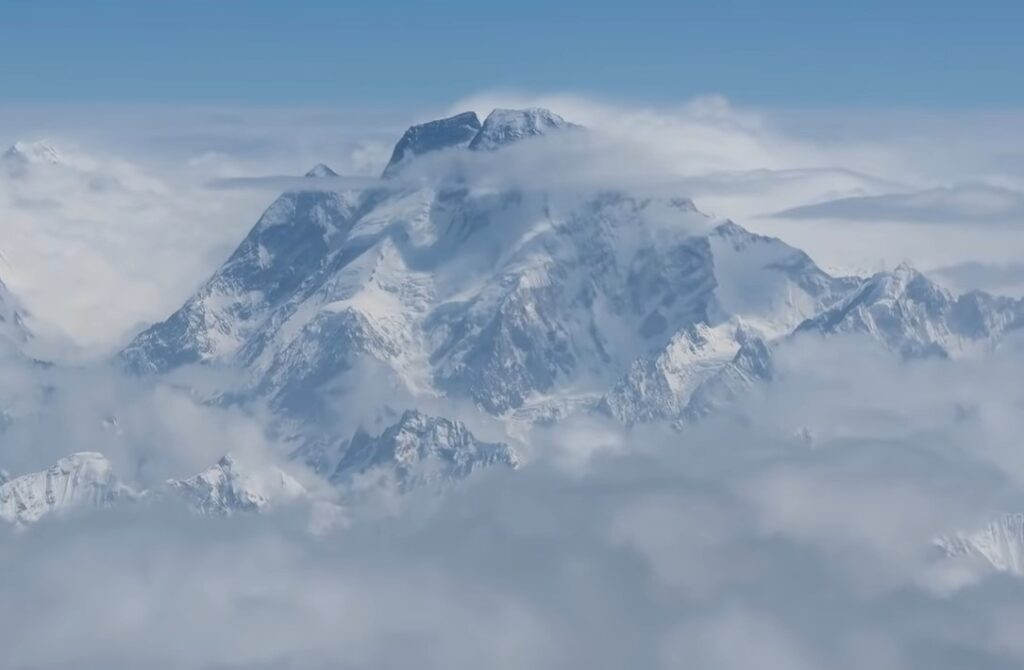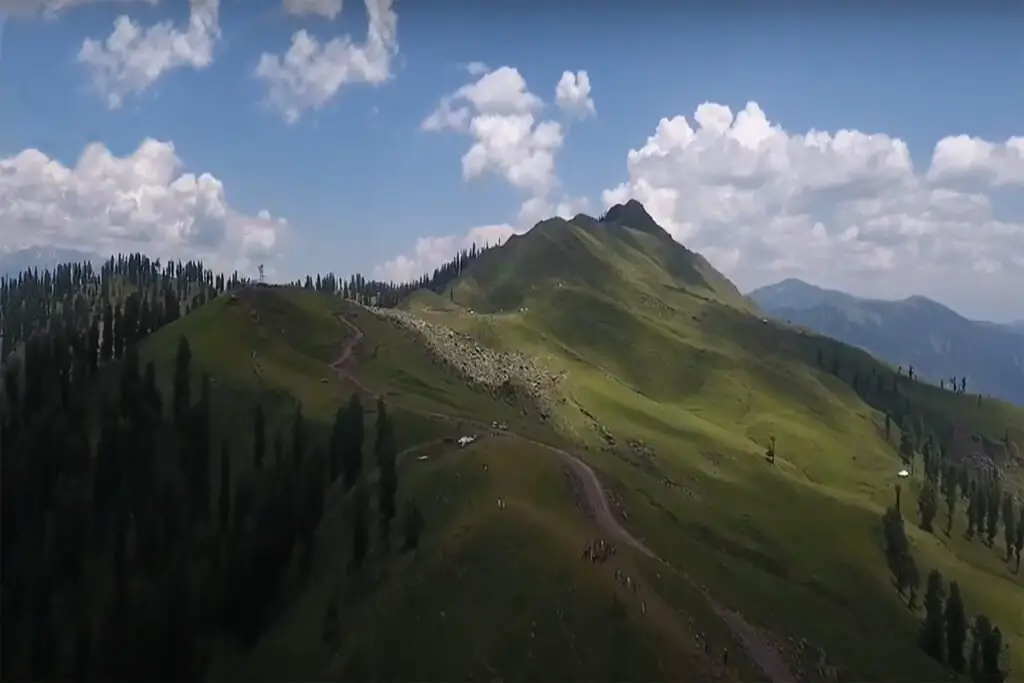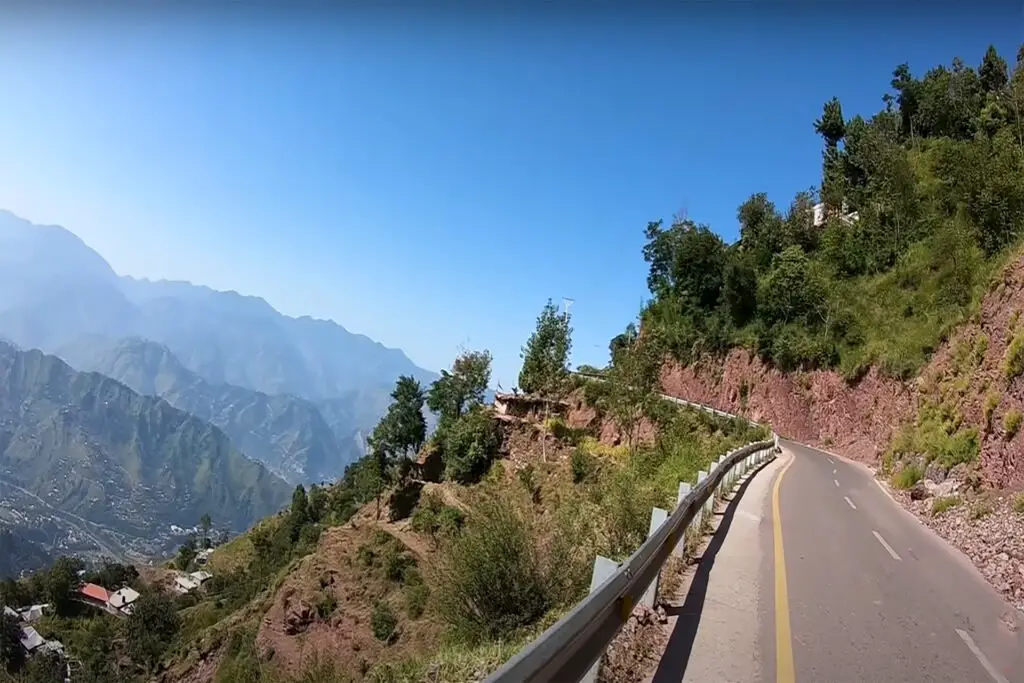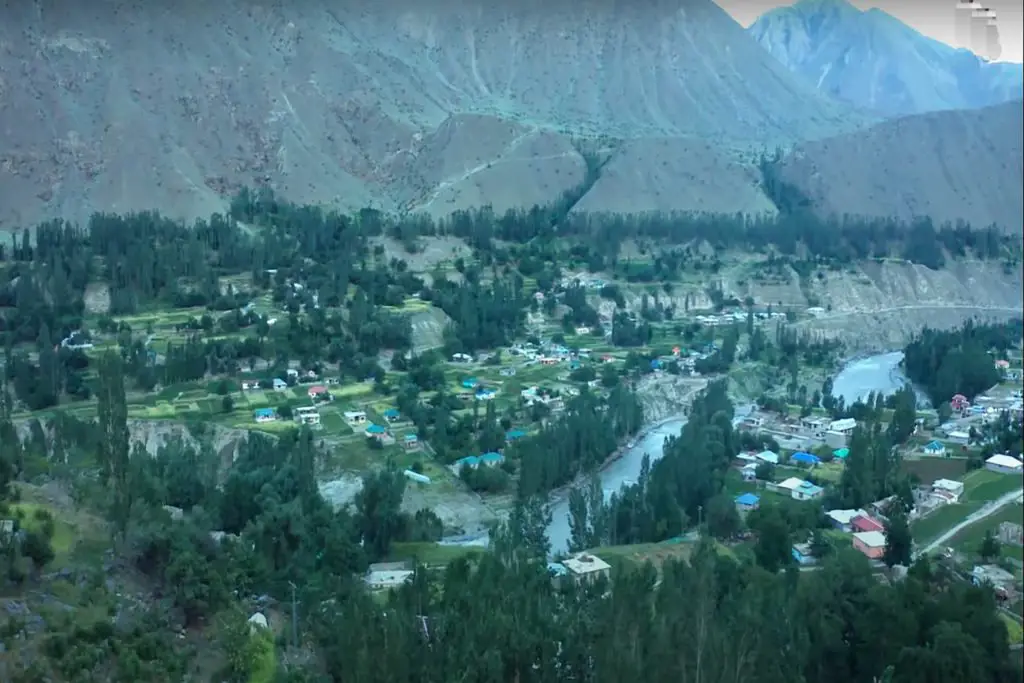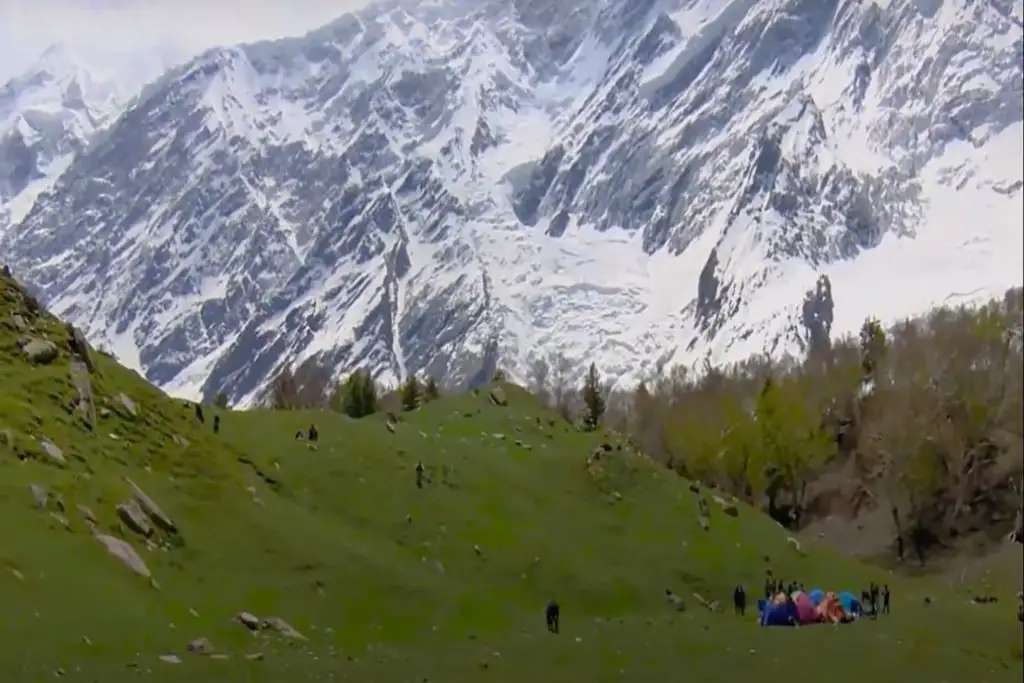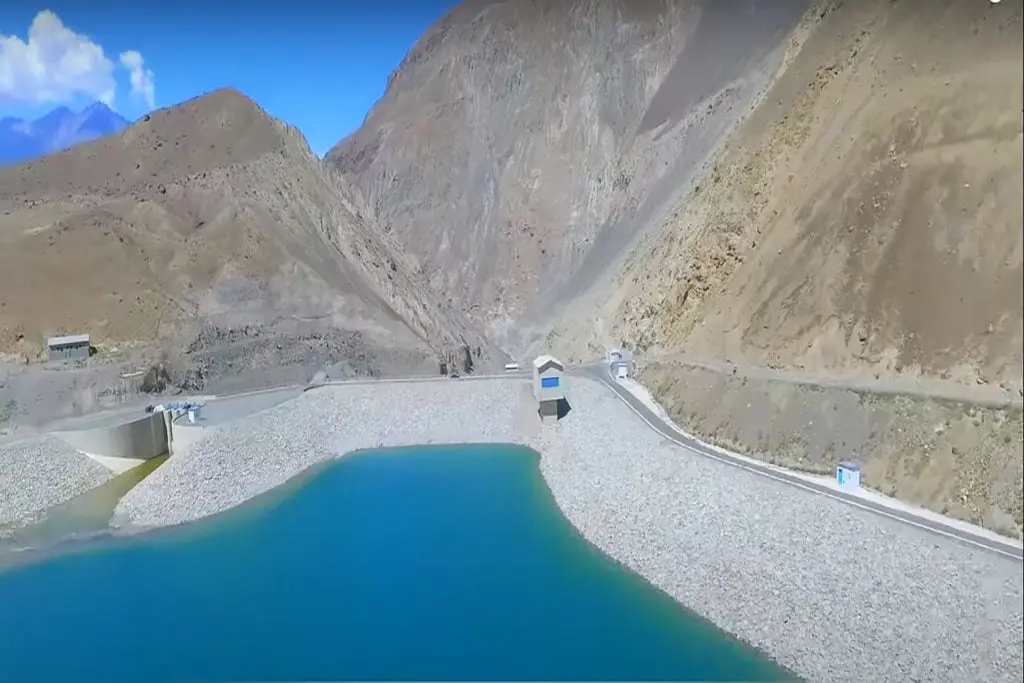Broad Peak is a mountain located in the Karakoram Range in the Gilgit-Baltistan region of Pakistan. It is the 12th highest mountain in the world, with an elevation of 8,047 meters (26,401 feet). Broad Peak is a popular peak for climbers and mountaineers and is known for its impressive height and challenging climbing routes.
Climbing History of Broad Peak
Broad Peak was first climbed in 1957 by an Austrian team led by Marcus Schmuck and Fritz Wintersteller. The team used a new climbing technique, known as the alpine style, which involved lightweight equipment and a fast ascent. This approach allowed them to climb the mountain in just 13 days, which was a remarkable feat at the time.
Since then, many other climbers have attempted to summit Broad Peak, and it has become a popular peak for experienced climbers. The mountain is known for its challenging climbing routes, which require technical skills and experience.
Location of Broad Peak, Pakistan
Broad Peak is located in the Gasherbrum massif, in the Baltoro Glacier region of the Karakoram Range. The mountain is situated in a remote and isolated area, and the nearest town is Skardu in northern Pakistan. The peak has a pyramidal shape and is characterized by steep, rocky slopes and a prominent ridge leading to the summit.
The mountain has three main summits, the highest of which is the central summit, with an elevation of 8,051 meters. The other two summits are the south summit, with an elevation of 8,016 meters (26,289 feet), and the north summit, with an elevation of 7,550 meters (24,770 feet).
Geography and Topography
Broad Peak is located in the Karakoram Range, which is a part of the greater Himalayan mountain system. The highest summit, Broad Peak, is also known as K3, and it is the main focus of most climbing expeditions.
The mountain has a distinctive pyramid shape, with a steep and rocky summit. The lower part of the mountain is covered with snow and glaciers, which can make climbing challenging due to crevasses and avalanches.
What is the rank of Broad Peak in Pakistan?
Broad Peak is a prominent peak in the region and a popular destination for mountaineers. Its ranking as the 12th highest mountain makes it a significant and challenging objective for climbers seeking to conquer the world’s highest peaks.
Why is Broad Peak so hard to climb?
Broad Peak is considered one of the most challenging mountains to climb due to several factors:
Technical Difficulty: Broad Peak presents a range of technical challenges, including steep and icy slopes, crevasses, seracs, and rock sections. Climbers need advanced mountaineering skills, including ice climbing, mixed climbing, and rock climbing techniques, to navigate these sections safely.
High Altitude: With an elevation of 8,047 meters (26,401 feet), Broad Peak is located in the death zone, where the oxygen levels are significantly lower, and the effects of high altitude are more pronounced. Climbers must acclimatize carefully to prevent altitude sickness and manage the physical and mental challenges associated with extreme altitude.
Weather Conditions: Broad Peak experiences harsh and unpredictable weather conditions, even during the climbing season. Severe winds, extreme cold, and frequent storms can make climbing extremely challenging and dangerous. The weather window for summit attempts is limited, and climbers must carefully plan their ascent to take advantage of the best possible weather conditions.
Length and Duration: Climbing Broad Peak requires an extended period of time due to the logistics involved and the need for acclimatization. Expeditions typically last for several weeks, and climbers must establish multiple camps at higher altitudes to progress safely. The prolonged exposure to high altitude and the physical exertion involved can take a toll on climbers’ stamina and mental resilience.
Remote Location: Broad Peak is situated in a remote and isolated area of the Karakoram range in Pakistan. Access to the mountain requires lengthy approaches and logistical challenges. The lack of infrastructure, limited communication, and difficult transportation routes add to the complexities of organizing and executing an expedition on Broad Peak.
Avalanche and Serac Risks: The steep slopes and glaciated terrain of Broad Peak increase the risk of avalanches and icefalls. Climbers must assess and manage these hazards throughout their ascent, taking precautions to minimize the potential dangers posed by shifting ice and snow.
Low Success Rate: Due to the combination of technical difficulty, high altitude, and challenging weather conditions, the success rate of summiting Broad Peak is relatively low compared to other 8,000-meter peaks. Only experienced and well-prepared mountaineers with adequate training and experience attempt to climb Broad Peak.
Overall, the combination of technical challenges, high altitude, harsh weather conditions, and logistical complexities make Broad Peak a formidable and demanding mountain to climb, earning its reputation as one of the toughest peaks in the world.
Best Time to Climb Broad Peak
Broad Peak is a challenging mountain to climb, and it is considered one of the most difficult peaks in the world. The mountain is known for its technical climbing routes, steep ridges, and unpredictable weather conditions. The climbing season starts from June to August, and the best time to climb is during the months of July and August.
Broad Peak Climbing Routes
Broad Peak has several climbing routes, including the normal route, which is the most popular route and is used by most climbers. The normal route starts at the base camp, which is located at an altitude of around 4,900 meters (16,000 feet). From there, climbers follow a steep and rocky trail, which leads to the high camp, located at an altitude of around 7,400 meters (24,300 feet).
The most popular route to the summit of the Peak is the normal route, which starts from the K2 Base Camp and follows the Abruzzi Ridge. The route involves technical climbing, including steep ice slopes, rock faces, and a knife-edge ridge leading to the summit. The climb usually takes around 50-60 days, and climbers need to be well-equipped and prepared for the harsh conditions.
From the high camp, climbers continue to the summit, which involves technical climbing and requires ropes and other equipment. The summit push is usually done in one day, starting early in the morning and ending in the late afternoon.
Challenges and Risks to Summit Broad Peak
Climbing Broad Peak is a challenging and risky endeavor, and climbers need to be well-prepared and experienced. The mountain is known for its extreme weather conditions, which can change quickly and unpredictably. The area is also prone to avalanches and crevasses, which can be dangerous for climbers.
Altitude sickness is also a significant risk, as the mountain is located at a very high altitude. Climbers need to acclimatize properly and be prepared to deal with the effects of altitude sickness.
Environmental Concerns
Like many other mountain peaks in the world, Broad Peak is also facing environmental concerns, including climate change, melting glaciers, and pollution. The melting of glaciers is affecting the local communities, who depend on the glaciers for water and irrigation purposes. The increasing use of fossil fuels and the growth of tourism in the area is also contributing to pollution and environmental degradation.
Broad Peak is a challenging and spectacular mountain, attracting climbers from all over the world. It is a symbol of human endeavor and achievement, but it also highlights the need to protect and preserve our natural environment. As more people are drawn to the mountains, it is important to ensure that we respect and care for these natural wonders, and work towards sustainable development in these fragile areas.
Broad Peak is a challenging and impressive mountain with a rich history of climbing and mountaineering. Climbing the mountain requires technical skills, experience, and careful planning, but it can be a rewarding experience for those who are well-prepared. The mountain offers spectacular views of the surrounding Karakoram Range, and the climb is a unique and unforgettable adventure for those who undertake it.

